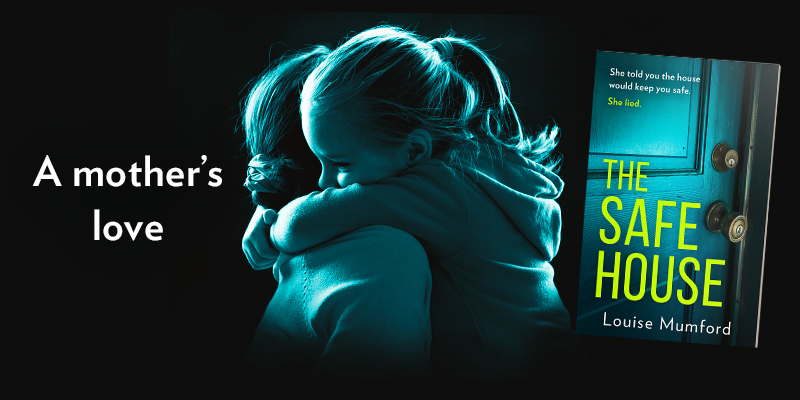We love a good story about a complicated mother/daughter relationship. But why is that? Louise Mumford, author of the new gripping psychological thriller The Safe House explores.
Overbearing, controlling, unhinged and selfish – the Bad Mother still dominates our books and films. Examples are Mrs Lisbon from The Virgin Suicides, Margaret White from Carrie, Joan Crawford in Mommie Dearest and Aurora in Terms of Endearment.
Why do these women hold such fascination for writers and audiences alike?
A mother’s love is fierce, protective and unwavering but strong emotions like these can easily sour. The line between being protective and being over-protective is a very fine one, dependent on so many different things. This is what Hannah, the mother in my second thriller The Safe House, grapples with. It would seem over-protective to keep your daughter away from the world, to effectively lock her in a house built especially for her, but to Hannah it is the sanest thing she can do because it is the only way, in her mind, that she can keep her daughter safe.
We have all seen over the past few years that one person’s view of safety is very different from another’s. During this pandemic many see mask-wearing and social distancing as vital parts of creating safe community spaces, but others would disagree. The idea of what constitutes safety can be a very personal thing.
Mothers are meant to be the pinnacle of self-sacrifice, kindness and patience but this is a pedestal that is often too hard to stay on. Bring trying to parent a daughter into the mix and it becomes near impossible. Why is it often the mother/daughter relationship that is the powder keg? In many of the stories jealousy is the cause: it is because the mother resents having the child in the first place and then has to watch that daughter have opportunities and chances that had perhaps been denied to her. The mother can see herself in her daughter and can see what they could have been. In others there is a twisted desire to see their daughter be better than they were, however they interpret that idea ‘better’, and however strict or controlling they have to be to achieve that. There is something about the clash between mothers and daughters that has a firm grip on society’s imagination.
The best stories though, do not simply make the mother the villain and the daughter the heroine. It was certainly never my intention in writing Hannah to make her a horror story stereotype. She thinks she is doing the best for her daughter and I was interested in what series of events brought her to that point where she took such a drastic decision to hide them both away. There are usually always reasons for why someone behaves as they do, if you look hard enough for them, and no one ever thinks they are the villain of their own story. If anything, Hannah would consider herself the heroine, the good person, because she saves her daughter and puts her own life on hold to do so. That element of sacrifice is always a flashpoint between mothers and daughters, sadly aided by a society that does not value mothers returning to work or continuing ambitions around raising a family. “Look what I sacrificed for you!”
Such tension and heightened emotion will continue to be the inspiration for many more stories to come. The saying goes: “A mother is a daughter’s best friend”. And she can also be their worst enemy…
The Safe House is out in paperback, eBook and audiobook 12th May.



